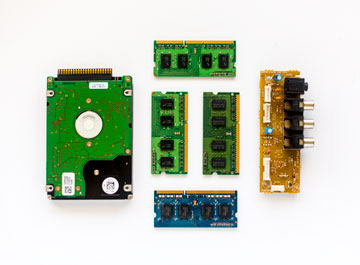A New Era in Bible Translation
Sovee Smart Engine & Community-Empowered Translation

It has been 2000 years since the Lord Jesus said, “Go and make disciples of all nations.” What is hindering the gospel’s progress in reaching all of the unreached people groups and languages? Is it a lack of money, lack of human resources, or a lack of technology? Or is it something else? One major reason is that, over time, paradigms lose their effectiveness because the world changes. These days, what kinds of paradigm changes are needed in Bible translation to see all the remaining languages in the world have free access to God’s Word in their heart language, and in this generation?
When we think about Bible translation, a verse that comes to mind is Daniel 7:14, “People of every language worshiped Him.” Revelation 7:9 describes people from every nation, tribe and language standing in the presence of the Lord. The essence of these verses is “every language.” This is the challenge before us.
The Magnitude of the Unfinished Task
Ethnologue (18th Edition) reports 7,102 living languages in the world as of now. There may be more languages since survey data is still incomplete. Wycliffe Global Alliance (wycliffe.net) reports the unfinished task as follows:
- The complete Bible is available in only 531 languages (7.5%). That means, 1.3 billion people are denied the privilege of having a full Bible in their heart language, whereas major languages, like English, can afford to have 10-20 or more different versions of the Bible.
- The New Testament is only available in 1,329 languages (18.5%). This means 5,773 languages still do not have a complete New Testament.
- There are an additional 1,023 languages (14%) with only scripture portions translated.
Languages with the Old Testament, the New Testament, and those with scripture portions adds up to 2,883 languages with Scripture. This represents just 40% of the world’s languages. Wycliffe Global Alliance (Wycliffe.net/statistics) reports there are currently 1,860 languages that will need scripture translation.
 However, this data is primarily based on socio-linguistic surveys and not on whether a church wants a Bible or not. Who should decide if a Bible is needed in a language? To have a better assessment of translation needs, we need to ask the Church, rather than only relying on linguistic experts to determine actual translation needs. Scripture translation needs are likely to be more than what is currently estimated using current methods for assessment.
However, this data is primarily based on socio-linguistic surveys and not on whether a church wants a Bible or not. Who should decide if a Bible is needed in a language? To have a better assessment of translation needs, we need to ask the Church, rather than only relying on linguistic experts to determine actual translation needs. Scripture translation needs are likely to be more than what is currently estimated using current methods for assessment.
A central question that needs better discussion is, who is responsible for making the Bible available to every person in the world? Is it the Church or para-church organization?
Everyone in the world needs to have the entire counsel of God from a full Bible translation in the language that best speaks to their heart, not just a few verses from Scripture, as is now the case in many languages.
The Paradigm Shift: Acceleration through Sovee + Community
When is the earliest we achieve zero languages without Scripture? Passionate great commission leaders may respond saying, “In our generation, because that is the only generation we have to live and make a difference.” If achieving that vision in our generation is the goal, then surely we need a new paradigm.
To accelerate translation starts and completions, we began working with the local believers in 18 South Asian languages. A key to acceleration is getting translation drafts completed sooner. We have been doing this by using the Sovee automated translation engine to produce Bible translations. Acceleration should be understood as production, completion, acceptance and use.
However, the product should be produced and owned by the believing community--the Church. It also has to be acceptable to that community. To achieve these things, the community must be involved in every stage of the translation. The work should be church-based and church-owned. This should result in early Scripture translation, acceptance and engagement. The goal of the Sovee translation project has been to complete a community-produced version of the New Testament for each of the targeted 18 languages within two years.
The Strategy
In April 2014, 2-4 mother tongue translators were selected in each of the 18 languages chosen for this project as an initial trial of the Sovee strategy. An important criterion for selecting languages was that there should be a community of believers who wanted to have scriptures in their heart language. Another criterion was that the language must have competent mother-tongue Bible translators available who can assist. Selection was based on the recommendation of the local community of believers.
The translators met every two months for training, evaluation of their progress, and to hear feedback from the team. The selected translators were then trained in using the Sovee translation engine technology. They also received ongoing church-based theological education using a biblical theology approach in addition to training in basic principles of Bible translation.
The Process
Acceleration of translation is also acceleration of community participation, acceptance and use. In 2014, the first step was for the local language speakers to make a list of the top 7,000 common words in the Bible. The words are from the Bible in basic English, which has about 1,000 words in total. Using other translations, we added more commonly used Bible words. We also added names of people and places, producing a list of 7,000 words. The words were placed in an Excel spreadsheet. This comprises the first dictionary in these languages. Mother tongue translators translated these words in the selected languages in consultation with language experts and Christian leaders from the communities.
The words were loaded into the Sovee smart engine translation software. The software quickly produced a draft translation of the entire Bible. At this point, it was still a rough translation, so we called it Draft Zero. The translation team then began to refine and improve the translations. The revision process involves five stages as shown at the bottom of this page.
The Sovee Revision Process
Stage 1 - The mother-tongue translators review the Sovee Engine translated content verse-by-verse, making corrections as best they can. They also compare this initial translation to the nearest major language translation available. Next the translators come together and discuss the translated content, making further corrections online. From this, Sovee produces a new output called Draft 1.
Stage 2 - Five copies of Draft 1 are printed and given to the local church community for evaluation, suggestions, and further corrections. This is a form of crowdsourcing feedback and improvement because a wide variety of people from the community participate. The translators feed these community improvements back into the Sovee translation engine software. The output translation is Draft 2 because it now includes feedback and improvements made by the community.
Stage 3 - This is the local consultant checking stage. In this stage, we use at least two local consultants and language advisors (as opposed to professional, mainly western, linguistic outside experts). The local consulting team consists of theologically trained leaders from the same language community or from a near-language group. These consultants go through Draft 2 with the help of the mother-tongue translators. The consultants also receive training in the Sovee/Community translation process, including translation principles. They will do checking for scriptural accuracy, spelling, grammatical errors, and ease of reading and listening. All the corrections are fed back into the Sovee engine and the output
is Draft 3.
Stage 4 - At this stage, we advise the translators and their local churches to form a language committee which consists of the mother-tongue translators, local consultants, community leaders, and language experts. They all work together to approve the translation. The approved draft will be released for wider testing with other churches and ministries working in the language group, giving them opportunity to make further corrections and improvements.
Following this process the translation is subjected to wider community scrutiny, both within the church community and also with people from outside. After incorporating corrections produced from this wider community testing, Draft 4 is produced. This draft is called the “Community Version of the New Testament”, and it is now ready for still more testing and evaluation.
Stage 5 - In this final stage, we request a professional Bible translation consultant to do a random spot check of the translated material. This helps us know if there are many gross errors or only a small number of errors, which informs us how much more work is needed for each translation.
The Pahari Mahasi Community Takes Action
Santhosh is a mother tongue translator in South Asia. Her language, Pahari Mahasi, is spoken by over 1 million people. There are now hundreds of believers in this language group. In 2007 the Gospel of Mark was published after nearly five years of work by a small translation team. The people rejoiced to finally have a Gospel in “their” language, but they wanted more. After several more years of waiting, the Gospel of Luke was produced and dedicated in 2014, and that generated renewed excitement about getting God’s Word in Pahari Mahasi. Some people were so happy they even kissed their copy of the Gospel. Even so, it still took two years to produce that translation. It was discouraging. At this rate the people wondered how long it would take to have the whole Bible in their language.
Translation, as slow as it was, was making a big difference for the people. Up until then, pastors had been preaching in Hindi, but the people did not understand the messages fully. Reading the Bible in their trade language was hard, too. In Pastor Ram Nath’s words, “It felt like a foreign god was being preached.” But when they starting preaching in their Pahari Mahasi language, people paid more attention. They listened more closely to the sermons and they participated more in worship. They said, “Jesus is no longer a foreign God!” They realized having the full Bible in their language would be a great blessing. They could more effectively establish their believers in faith by teaching God’s word in their heart language.
 When the people heard about the Sovee Bible project, the church decided to take action. They pulled together a team of five mother tongue translators, received training in the Sovee method, and got right to work. Now a year later, they have reached the Draft 2 stage of the entire New Testament. Santhosh says the people are very happy that translation progress is accelerating now because they realize they can have the whole Bible in their language—sooner than they could have hoped for.
When the people heard about the Sovee Bible project, the church decided to take action. They pulled together a team of five mother tongue translators, received training in the Sovee method, and got right to work. Now a year later, they have reached the Draft 2 stage of the entire New Testament. Santhosh says the people are very happy that translation progress is accelerating now because they realize they can have the whole Bible in their language—sooner than they could have hoped for.
Other language groups cling to the same hope. They say, “If a Bible translation project is going to be started, then it must also be completed.” This is in reference to the “Scripture portions” only approach that takes so long. The starts and stops are simply too frustrating for them. Indeed, they won’t be satisfied until they have all 66 books of the Bible translated in their language.
Bible Stories in Pahari Mahasui Attract Interest
Pastor Kalam is a mother tongue translator for the Pahari Mahasui Bible translation project. His son, Arun, is in the eleventh grade at a government school. He is keen to learn Bible stories in his language. Whenever he shares stories, tells jokes, and acts in school dramas, he does it all in his Pahari Mahasui language. Students and teachers get excited hearing these things in the local language. It draws their interest, so they give him opportunities to do more. It’s plain to see that Bible translation in their local language does not only impact the Christians. It can also have an effect on the wider community. The local church wants to stimulate this interest by providing translations of some non-Scripture material in the local language, too.
The Pahari Mahasui translation team says they are getting more rooted in God’s Word through the translation work. They feel privileged to be a part of Bible translation ministry and see it as a trust given to them.
General Results Thus Far
In less than 12 months we have completed stage 1 of the entire New Testament in 13 languages. Another 6 languages have finished stage 2 and have reached stage 3. We hope to complete the entire New Testament in less than 2 years. However, the ultimate goal is to reduce NT translation time to 1 year as we gain more experience.
Importantly, with this paradigm we are also seeing early Scripture acceptance and engagement by the church community as they are involved in the translation process. Including the community at every stage leads to this early use.
Costs
Currently, using the Sovee process, translation costs about $10 per verse, but this is only a fraction of what translating costs under the current traditional paradigm. In terms of timeframes, the current paradigm takes 10-25 years to complete a New Testament. As stated above, the goal of this new paradigm is to complete a New Testament within one year.
Conclusion
The goal is zero languages without scriptures in all the remaining languages without a New Testament, and at a financial cost that is well within the reach of the church at large today. Today’s smart engine translation technology and new ways of working within the community greatly empower the whole body of Christ to accomplish this goal in our lifetime. But we need to unlearn some old operating paradigms that prevent us from moving forward. Can the goal of zero languages be achieved in our generation? Quoting D.L. Moody, “IT CAN BE DONE, IT OUGHT TO BE DONE, IT MUST BE DONE.









comments